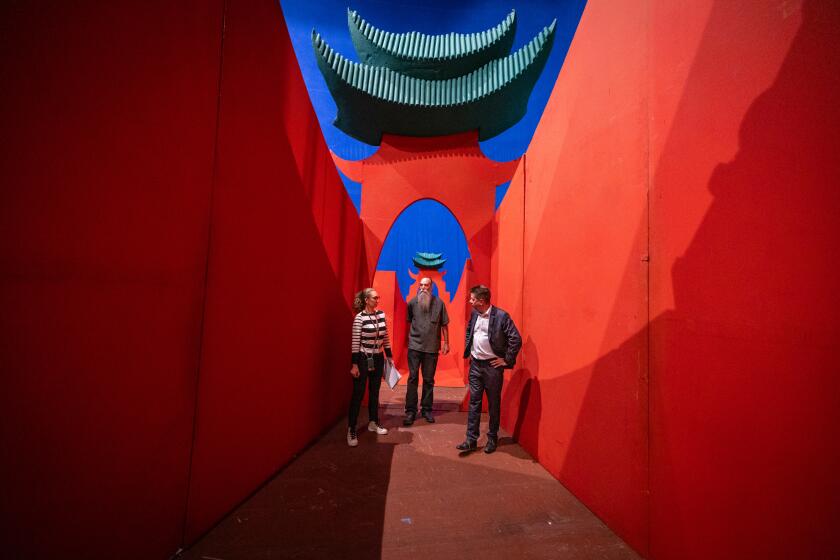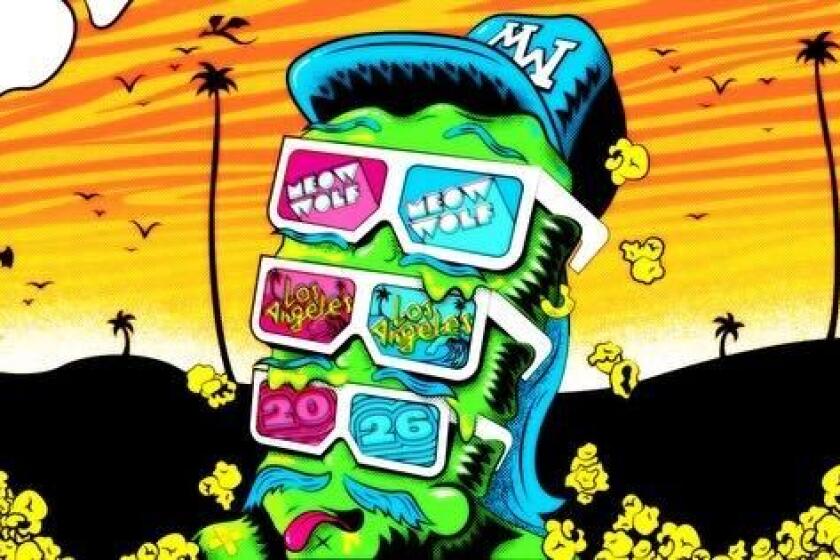Trip Up Stairs Can Color Concepts of Photography
Situated between two Laguna Beach clothing stores, behind a nondescript blue door and up 26 narrow steps to a room at the top, the BC Space Contemporary Gallery & Photographic Art Services is not the kind of place you will find by chance. But the absence of a storefront acts as a natural filter. Those who really want Cibachrome printing and custom black-and-white printing find them.
Curiously, this photo gallery, custom lab and commercial studio has flourished where others have failed.
“We are a fine art photography gallery amidst a great many commercial galleries in Laguna Beach,” BC Space owner Mark Chamberlain said.
“We don’t provide the same service. The (others) are there to put out the work that will sell. We’re here to show the work people need to see.”
During the past 10 years, BC Space has been the undisputed king of Cibachrome printing in Orange County, bringing it to a precise science.
Cibachrome, patented by Ilford, is both a process and a material. Color prints are made directly from color slides based on the silver-dye bleach principle. Chamberlain says it differs from the more popular and conventional procedure (Kodak’s color negative C-41 and Ektaprint).
He estimates that 90% of the color prints today are made with the Kodak process, which he refers to as “a relatively impermanent process, particularly when compared to Cibachrome.”
“The Ektaprint and color negative are called chromogenic or dye-coupler process,” Chamberlain said. “The dyes that are in the paper and chemistry are brought together to create an image. The resulting image is relatively transient.
“Cibachrome prints are made through a dye destruction process, so the dyes are permanently imbued into the material. You expose it and strip out the unwanted dyes. What remains is very stable, similar to the black-and-white process.”
Chamberlain, who has worked with Cibachrome since 1974, said: “Most color negative prints are made on a resin-coated paper backing. The backing does not have an archival lifetime. The Cibachrome backing has a very long life, and it’s very durable.”
The average Cibachrome print takes about a week to make and costs $30 for the first 8-by-10-inch print; duplicates cost $19. A 30-by-40-inch print costs $300, with duplicates costing $170.
Does the process take more patience than other color printing?
For some, perhaps. “We’ve gotten to the point where it’s second nature,” Chamberlain said. “I’ve been to other labs, and what we would consider a somewhat straight or routine print is considered going to exaggerated lengths from their point of view.”
It is a labor of love for Chamberlain, as are his other endeavors. He is a combination artist, carpenter, plumber, chemist, administrator, gallery director and commercial photographer.
He started the lab on a shoestring. One day, while answering an ad to buy a used desk, he noticed the large, open space at the top of the 26 stairs. At the time, it was a storage area for shoes for the shop next door. Before that it was a Masonic Temple.
Chamberlain peeked under the old, ugly carpet and found hardwood floors. The next thing he knew, he had signed up to rent the space with his friend, Jerry Burchfield. The two opened BC Space on April 1, 1973, and Burchfield later sold his interest to Chamberlain.
“We wanted to do things with color photography that we couldn’t easily get done anywhere else,” Chamberlain said.
The firm’s clientele has changed, too, over the years. “In the beginning we had a few commercial accounts and then gradually added a coterie of people like ourselves--photographers who wanted to get superior printing done that couldn’t be done in most of the mass-production houses (photo labs) or the custom lab,” he said.
Today the mixture of clients includes galleries that need special printing, commercial concerns and photographic artists.
Chamberlain found the commercial lab business to be very hectic. He grew tired of the adage: “It’s due yesterday.”
More to Read
The biggest entertainment stories
Get our big stories about Hollywood, film, television, music, arts, culture and more right in your inbox as soon as they publish.
You may occasionally receive promotional content from the Los Angeles Times.







